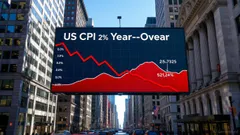AInvest Newsletter
Daily stocks & crypto headlines, free to your inbox
The digital marketing landscape is undergoing a seismic shift, driven by artificial intelligence (AI) tools that are transforming how companies create, optimize, and distribute content. Once a niche experiment, AI-driven content optimization has evolved into a $47.32 billion industry in 2025, with growth projections suggesting it will surpass $240 billion by 2030. This expansion is fueled by a combination of generative AI's creative prowess, SEO performance gains, and measurable ROI improvements. But as adoption surges, so do the complexities of balancing automation with human insight. For investors, navigating this space requires understanding where AI delivers value—and where it still falls short.

The most immediate impact of AI tools is their ability to accelerate content creation. By 2025, 88% of marketers use AI daily, with 93% relying on it for faster content production. Hybrid workflows—where AI drafts content and humans refine it—have emerged as the gold standard. For instance, companies using this approach report 14% higher featured snippet rankings than those using purely manual or AI-only methods. A case study from 2024 highlights how AI-generated articles on a domain with a 78/100 “Domain Rating” secured three top-10 rankings, including a #1 position, within four months, along with 14 editorial backlinks. Such results underscore AI's role in democratizing SEO success, enabling smaller players to compete with established brands.
The ROI math is compelling. AI reduces content production costs and time while boosting output volume. For example:
- 26% better ad targeting and 32% higher conversions from AI-driven audience segmentation.
- 47% higher click-through rates (CTR) and 29% lower cost per acquisition (CPA) from AI-generated creatives.
- Fit and sizing AI tools for apparel retailers have slashed returns by 20–30% while lifting conversion rates by 200–332% and average order values by 27–35%.
Even non-retail sectors benefit: conversational AI chatbots cut support costs by 20%, while supply-chain AI tools reduce overstock by 40% and improve forecasting accuracy by 50%. For investors, these metrics suggest a multi-year tailwind for firms offering such solutions.
Despite its promise, AI has clear limitations. Human-written content still outperforms in semantic richness, achieving 18% lower bounce rates and 41% longer session durations. AI also struggles with temporal relevance: 28% of its data points are outdated, and only 12% of AI tools provide verifiable case studies. Consumer skepticism persists too: 28% of U.S. adults distrust AI results, and 16% prefer human-generated content.
These gaps create opportunities for firms that blend AI with human expertise. Hybrid workflows are critical here. Companies like OmniSEO™, which combines AI drafting with human oversight to ensure compliance with Google's E-E-A-T (Experience, Expertise, Authoritativeness, Trustworthiness) guidelines, are well-positioned to capitalize. Similarly, tools emphasizing technical SEO—such as schema markup (which boosts CTR by 33%), Core Web Vitals compliance (LCP < 2.5 seconds), and entity graph alignment (27% higher rankings)—are becoming indispensable.
Investors should prioritize firms that address these challenges:
1. Hybrid Solutions: Companies like Semrush, which expanded its AI-driven content offerings to include human-curated SEO audits, are outperforming peers.
2. Technical SEO Mastery: Smaller players like Bright Data and Ahrefs are gaining traction by focusing on niche areas like entity graph optimization and real-time data integration.
3. Brand Authority Focus: Avoid firms relying on low-quality backlinks—Google's AI algorithms now penalize such practices. Instead, back companies building authentic brand mentions through content that resonates emotionally with audiences.
ROI timelines vary by use case:
- Personalization & Fit AI: Visible within 1–6 months (conversion lifts, reduced returns).
- Supply-chain AI: Benefits materialize in 6–12 months (inventory accuracy, cost savings).
- Conversational AI: Improves customer satisfaction and cuts costs within 3–9 months.
The AI content optimization market is not a binary choice between human and machine. The winners will be those who merge the speed and scale of AI with the nuance and creativity of human judgment. For investors, this means favoring firms that invest in hybrid workflows, technical SEO innovation, and trust-building brand strategies. With adoption rates still rising and ROI metrics validating the shift, this sector promises to be a cornerstone of digital marketing—and a fertile ground for long-term growth.
The next wave of disruption will come from tools that adapt to evolving search algorithms, like Google's “search everywhere” vision. Companies like OmniSEO™ are already there. Are you?
Tracking the pulse of global finance, one headline at a time.

Dec.18 2025

Dec.18 2025

Dec.18 2025

Dec.18 2025

Dec.18 2025
Daily stocks & crypto headlines, free to your inbox
Comments
No comments yet